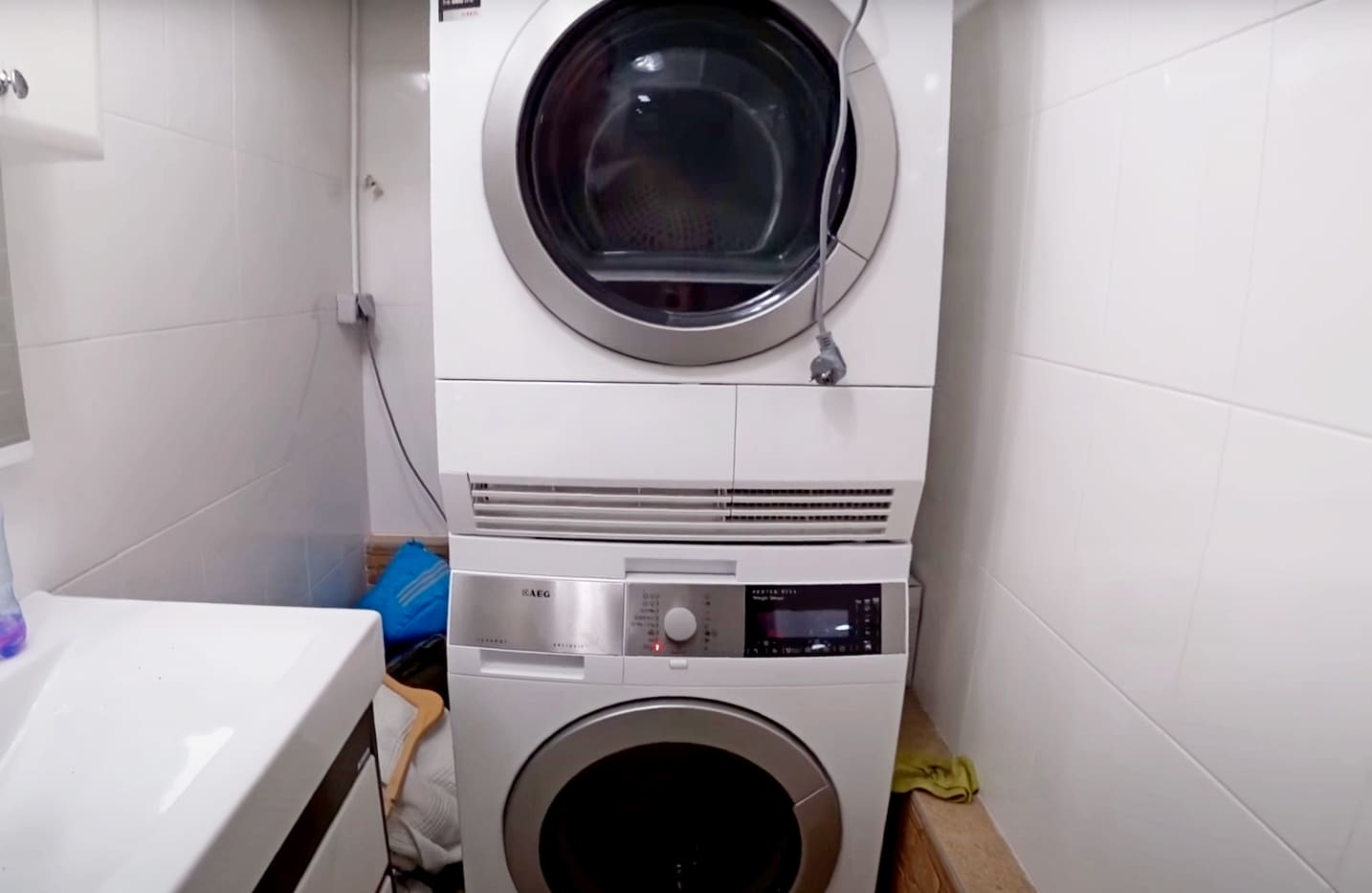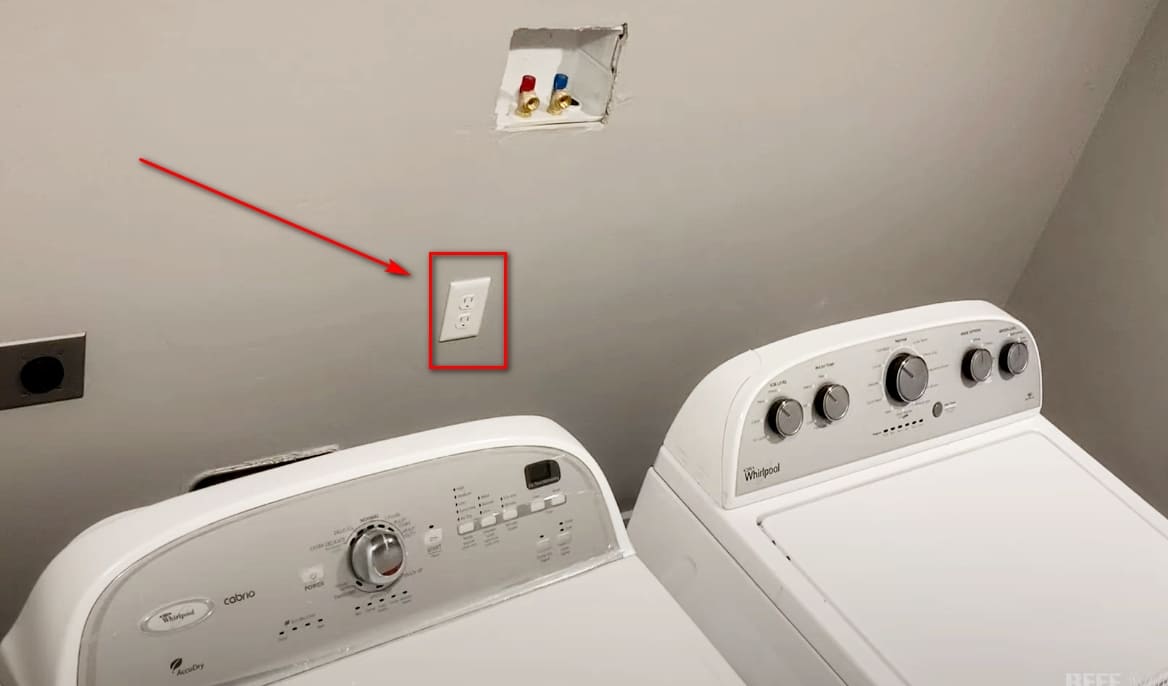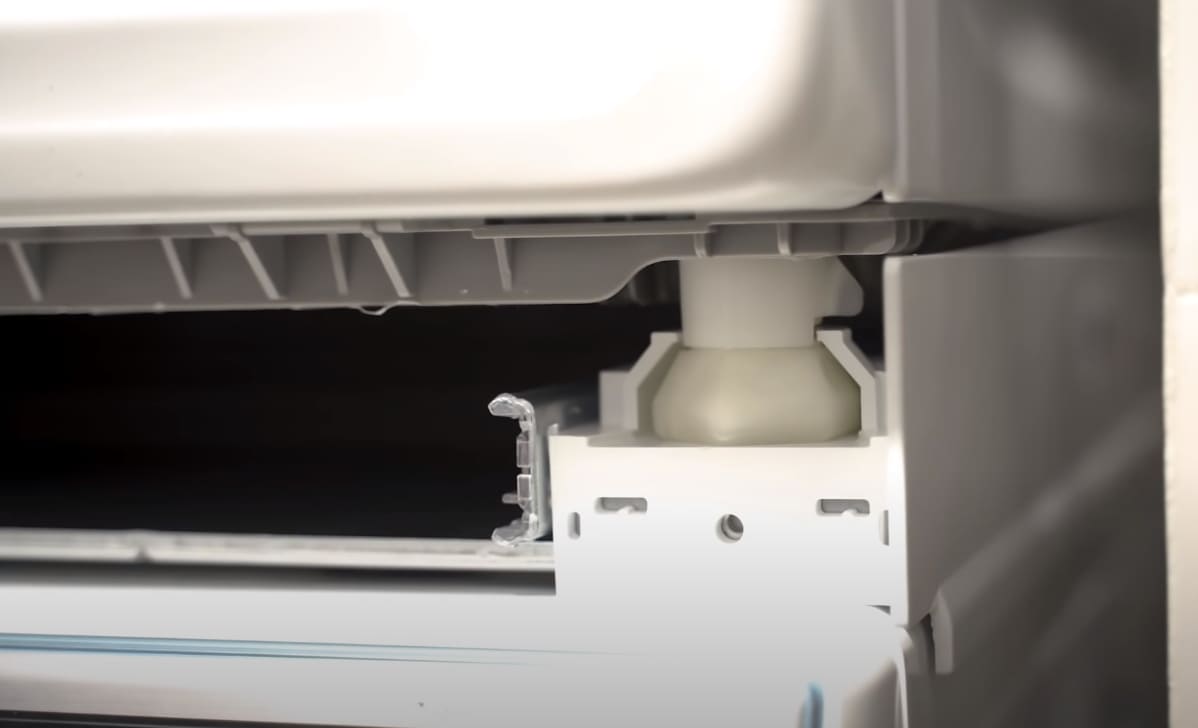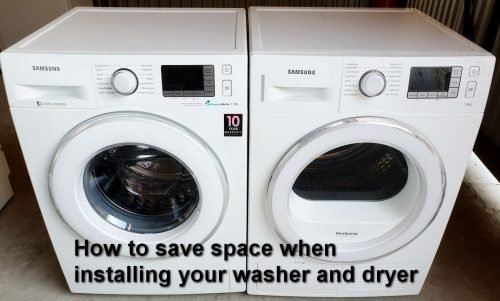
Small apartment owners often choose between buying a washing machine and a separate dryer. Indeed, in a limited space, both of these units are difficult to place. There is actually an easy way to mount a tumble dryer over a washer. In this article, we will talk about the advantages of this approach and some installation tricks.
Where to place the washer and dryer set
The most important thing when installing a washer and dryer is that they must have access to three things: the power supply, the water supply, and the ventilation hose. Therefore, this technique can be installed in any room where all three conditions are met. This could be a bathroom, pantry, or kitchen. It all depends on the layout and location of communications in your apartment or house.
Keep in mind that the washing machine is always placed at the bottom, as it vibrates more during operation, and the weight of many models is greater than that of dryers. In addition, there must be sufficient space behind and near the appliances to make room for their connections and to ensure maximum air flow to the dryer.
Power supply
More precisely, the units should be installed where there are at least two sockets – this is a technical safety requirement. Do not try to connect both devices to the same outlet through a tee – this can cause the outlet to fail, since both devices are powerful enough.
It is important to note here that you must use a wall outlet or direct wiring to the circuit breaker. Many houses and apartments are designed so that household appliances can be placed in the kitchen or even in the bathroom. Kitchen sockets are often grounded and are designed to handle large household appliances.
Water supply and sewerage
Convenient connection to water supply and sewerage systems is another important installation condition. Dryer models that have steam functions may also need the same water supply. While some steam dryers have built-in water tanks, others will use plumbing instead.
Usually in the kitchen there is a sewer drain for the sink, you can also connect the drain from the washing machine here. In the bathroom in new buildings, wiring for the fence and drain for washing machines is often already laid. If not, then an experienced craftsman can easily connect household appliances to the water supply.
Ventilation hose
The tumble dryer is installed using special mountings on top of the washing machine without touching it. In addition, it will be necessary to install a ventilation hose through which hot air from the dryer will escape through the ventilation. You cannot use the dryer in a small room without a hose. When installing the hose, do not completely block the ventilation hole, this will disrupt the air exchange in the room.
Special mounts
It is strictly forbidden to install the dryer directly on the washing machine. During operation, both units emit strong vibrations, which can cause damage to them. Some attachment kits come with hidden tables that can be used when transferring clothes from the washer to the tumble dryer.
Minimum space requirements
Although the washer and dryer package takes up little floor space, it will still need to calculate the space for a comfortable and safe installation. The problem here is that washer and dryer manufacturers don’t have standard sizes, so you’ll have to do a little extra homework to find brands and models that fit into the space you have.
It’s important to understand that sizes don’t just vary between brands. The average sizes of these devices also differ between devices from the USA and Europe or other countries.
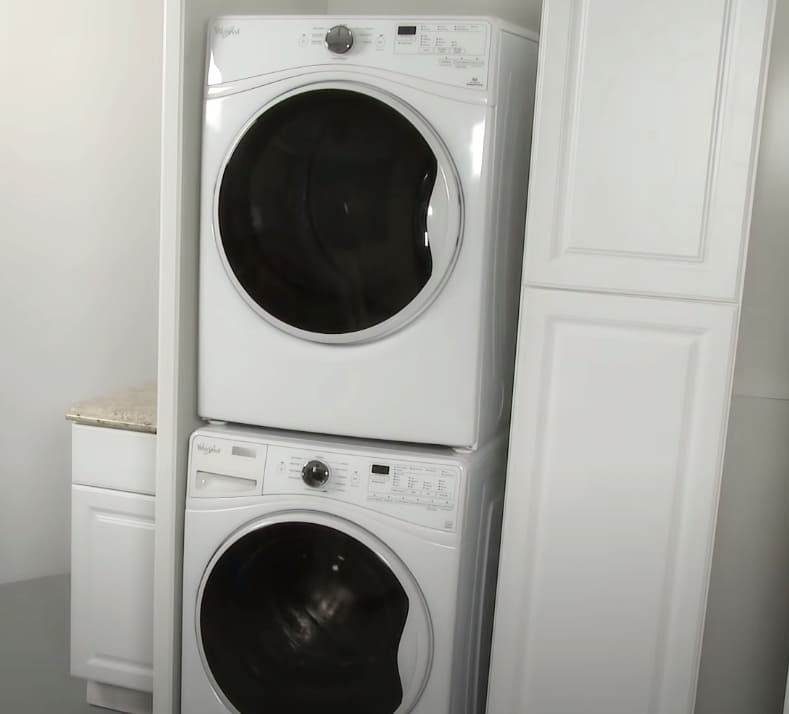
Here’s what it means:
American brands such as GE and Whirlpool have an average width of 69 to 74 cm for complete washers and dryers. European brands such as Zanussi and Bosch have an average width of 58 cm for European-made washers and dryers.
By understanding these averages, you will have a much better understanding of which brands and models to choose when you purchase your home appliances.
After you have allocated space for the size of the washer and dryer kit, you also need to allocate space for their connections. The piping to the water and sewerage system, to the outlet and to the ventilation should take up the necessary space and not interfere with the use of washing and drying equipment in full.
Here are general guidelines for the space to be allocated around the washer / dryer kit:
There should be at least 20cm clearance from the back to the wall, as many of the connections go out to the back of the washer and dryer.
From the side walls: there must be a clearance of at least 3 – 5 cm so that the machines do not hit the side walls, even if they swing slightly in the middle of the cycle.
When installing a set of a washing and drying machine, it is worthwhile to think over all the nuances of installation in advance and understand whether this technique will be convenient to use. Is there enough space around to comfortably load and unload laundry, as well as service equipment? Remember also that the floor covering must be resistant to moisture in the event of a leak.

